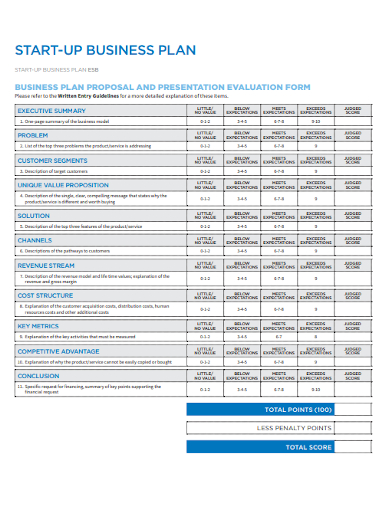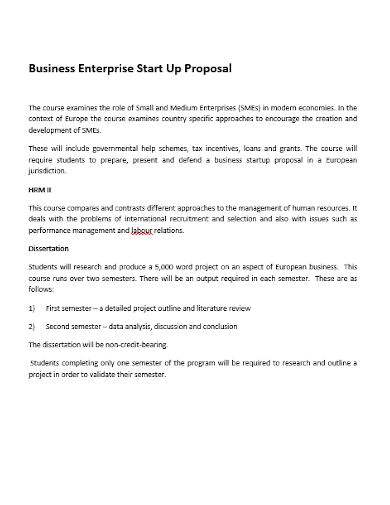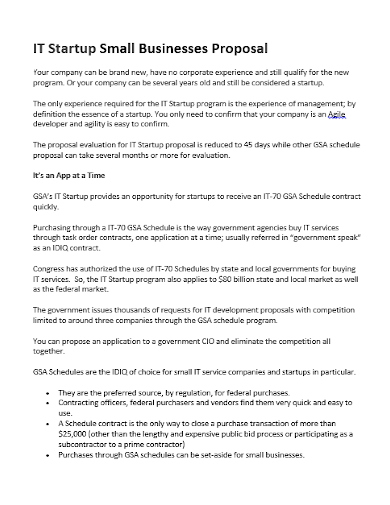So your new business is operating along fine and your customer base is finally starting to expand. Even though you’re doing well in your business and your progress is good, you want to challenge yourself and want to improve your business and increase its revenue. You can do that if you have the right resources and a lot of guts of taking more clients for your business even if you’re just a startup. After all, there are a lot of untapped prospective clients around you that would benefit from your product or service. To connect with these prospects effectively, a business proposal is what you need to show them that you are the right business in satisfying their wants and needs. This article will guide you on how to make a startup business proposal.
1. Business Proposal for Startup Company
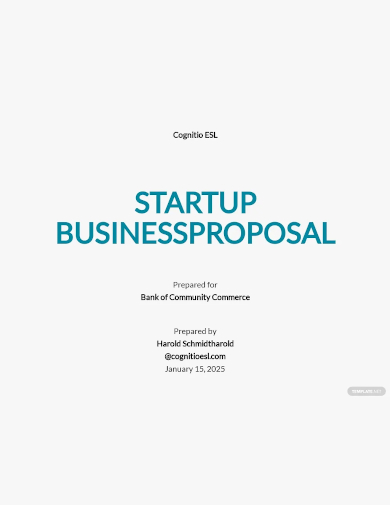
2. Free Startup Business Proposal Template
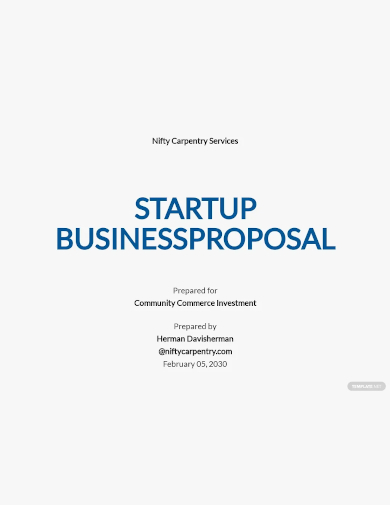
3. Startup Business Plan Proposal Form
4. Business Enterprise Startup Proposal
5. IT Small Business Startup Proposal
What is a Business Proposal?
A business proposal is a formal written document that is created by a company or a businessman to secure a business agreement with a prospect. The prospect can be a new customer or client.
How to Make a Startup Business Proposal
1. Start With a Title Page
Begin your business proposal by introducing yourself and your business. Include your name, your company’s name, the date you submitted the proposal, and the name of the client you’re submitting the proposal.
2. Make an Executive Summary
Your executive summary should explain straightaway why you’re sending the proposal to the client and why your solution is the best for the prospective client. Specify the reasons why you’re the best option for your client. Your executive summary, as the name suggests, summarizes what your proposal is all about so your client will have an idea or two of what it is all about. You can also highlight your products or services and how these will help provide solutions for your client’s needs and wants.
3. State the Problem of the Client
This section is where you elaborate on the problems or needs your client is facing. This will let your client see that you clearly understand the needs they want to be met and the problems they want to be solved.
4. Propose a Solution
This section is where you specify what strategies you will offer to clients to solve their problems or satisfy their needs. Make sure your proposed solution/s are customized according to the client’s preference. Let them know which deliverables you’ll give, the methods you’ll use to achieve the solution, and a timeframe for you to solve their problems or needs.
5. Mention Your Qualifications
To let the client know you’re qualified to solve your client’s problems and you are trustworthy enough to deliver what you promised them; show off your qualifications that you’re the best business who can satisfy your client. Show your previous client’s success stories, relevant achievements that you’ve received as a business professional, and accreditations to boost your credibility.
6. State Your Price
This section is probably where you will hit a snag since you don’t want to under or over-price your products or services. If you’re not sure on how to price your products or services, include an optional fee table where you can provide the client with a few pricing options. You can easily discuss this while you propose to them.
7. Clarify Your Terms and Conditions
Include other important terms such as the timeline of when you will work out this project when you will give the deliverables when you will finish the project and the payment schedules. Include other terms that will summarize what you and the client will agree to if they accept the proposal. Be clear about all these details.
8. Include Signature Lines
Include a signature box for the client to sign and let them know exactly what they’re agreeing to when they sign.
FAQs
What are the types of business proposals?
There are two types of business proposals and these are
- Unsolicited business proposals: You approach a potential customer with a proposal, even if they don’t request a proposal. The reason to do this is to enter a business relationship with them.
- Solicited business proposals: Solicited business proposals are requested by a prospective client.
What are the seven parts of a business plan?
The seven parts of a business plan are:
- Executive summary
- Company description
- Products and services
- Market analysis
- Strategy and implementation
- Organization and Management teams
- Financial plan and projections
What are the three types of business plans?
There are three main types of business plans are operational, tactical, and strategic.
Writing a proposal isn’t a task that can be done in a hurry. You have to commit a lot of time to brainstorm, planning, creating, and revising your proposal just to make it suitable enough to present to a prospective client. However, don’t pressure yourself to finish it on a whim especially if you’re trying to find the right timing to propose to a client; you need to take your time in writing it so that your proposal is clear and free from error. To help you get started on writing your startup business proposal, download our free sample templates provided above!
Related Posts
FREE 11+ Engineering Project Proposal Samples in PDF | MS Word
FREE 4+ Racing Sponsorship Proposal Samples [ Team, Car, Driver ]
FREE 10+ Nursing Project Proposal Samples [ Community, Health, Clinical ]
FREE 11+ Student Council Proposal Samples in PDF | DOC
FREE 10+ Facilities Management Proposal Samples in MS Word | Google Docs | Apple Pages | PDF
FREE 8+ Joint Venture Proposal Samples [ Commercial, Real Estate, Construction ]
FREE 10+ Scholarship Proposal Samples [ Project, Grant, Sponsorship ]
FREE 10+ Computer Purchase Proposal Samples in MS Word | Google Docs | Apple Pages | PDF
FREE 10+ Network Project Proposal Samples [ Design, Security, Bank ]
FREE 14+ Accounting Proposal Samples in PDF | MS Word
FREE 10+ Church Event Proposal Samples in MS Word | Google Docs | Apple Pages | PDF
FREE 10+ History Proposal Samples [ Dissertation, Thesis, Paper ]
FREE 34+ Sponsorship Proposal Samples in PDF | MS Word | Pages | Google Docs
FREE 11+ Cost Proposal Samples & Templates in PDF
FREE 11+ Maintenance Proposal Samples in MS Word | Google Docs | PDF

